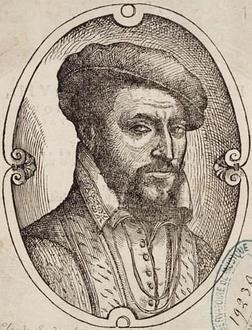 | ||
Similar Guillaume Costeley, Eustache Du Caurroy, Pierre Certon, Les Ménestriers, Adrian Le Roy | ||
Mignonne allons voir si la rose by jehan chardavoine
Jehan Chardavoine (born c. 1537 at Beaufort, Anjou – died c. 1580 in Paris) was a French Renaissance composer. He was one of the first known editors of popular chansons, and the author, according to musicologist Julien Tiersot, of "the only volume of monodic songs from the 16th century that has survived to our days."
Contents
- Mignonne allons voir si la rose by jehan chardavoine
- Une jeune fillette jehan chardavoine renaissance fran aise
- Biography
- Discography
- References
Une jeune fillette jehan chardavoine renaissance fran aise
Biography
Jehan Chardavoine is mostly known for his publication, Recueil des plus belles et excellentes chansons en forme de voix de ville, tirées de divers autheurs et Poëtes François, tant anciens que modernes. Ausquelles a esté nouvellement adaptée la Musique de leur chant commun, à fin que chacun les puisse chanter en tout endroit qu'il se trouvera, tant de voix que sur les instruments ("Collection of the most beautiful and excellent songs in the form of voix de ville, taken from various French authors and poets, both ancient and modern. To which texts have been newly adapted the music of their main tune, so that anyone may sing it at whichever place they may be, on voice as well as on instruments."). Published in 1576, it is the most ancient collection of French popular songs ever printed. It begins with an epistle addressed to "The readers", "on this 12th day of November, 1575". It contains 186 songs based on strophic poems. Some of the songs were just collected and published by Chardavoine, while others are his own adaptation to monody of previous polyphonic works by composers such as Jacques Arcadelt, Pierre Certon, and Pierre Cléreau. In most cases, he has transformed the original music to such an extent that it can be considered a new work.
Some of the poems to which Chardavoine adapted new music were anonymous, while others were by poets of his time, such as Clément Marot, Mellin de Saint-Gelais, Jean-Antoine de Baïf, Pierre de Ronsard and Joachim du Bellay.
Among the poems set to music and published in his anthology are the famous Mignonne allons voir si la rose and Ma petite colombelle, by Ronsard; Si vous regardez madame, by Du Bellay; and Longtemps y a que je vis en espoir, by Marot. Some of these airs have been reused by the polyphonists, as is the case with Une jeune fillette, converted by Clément Janequin —who was perhaps his pupil— into his Il estoi une fillette.
